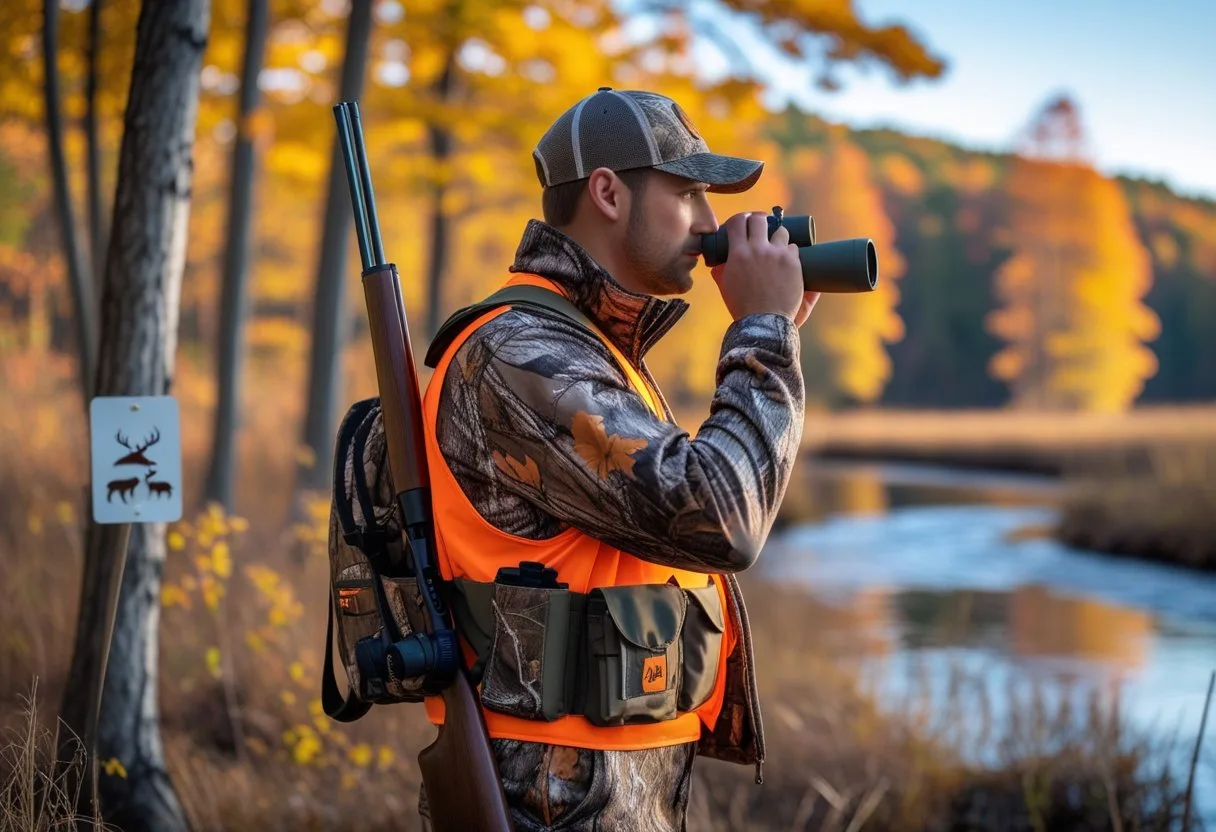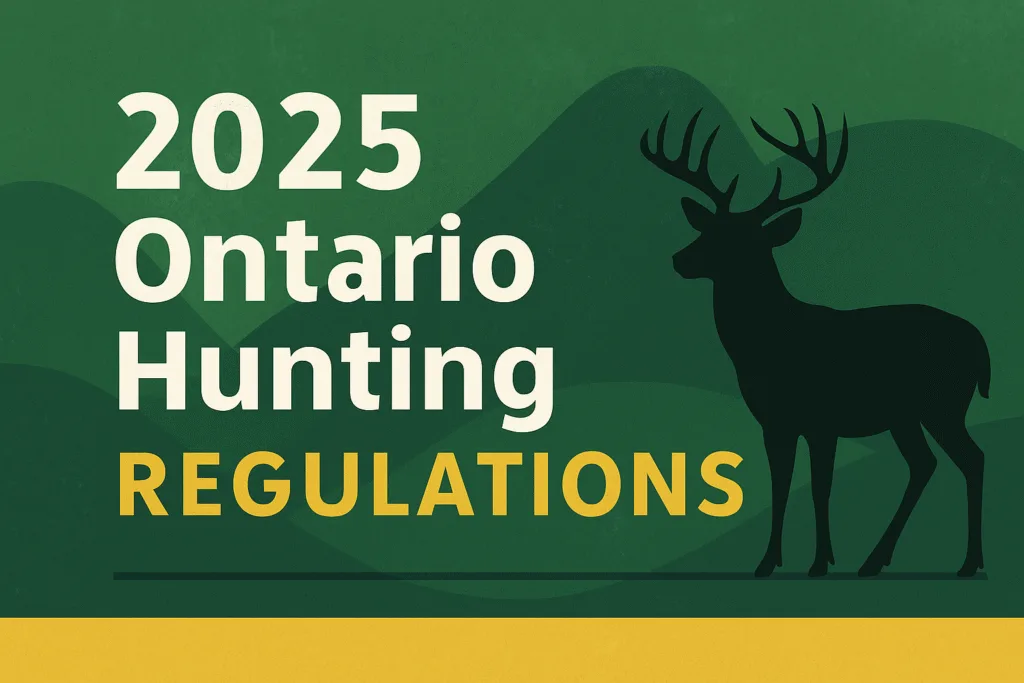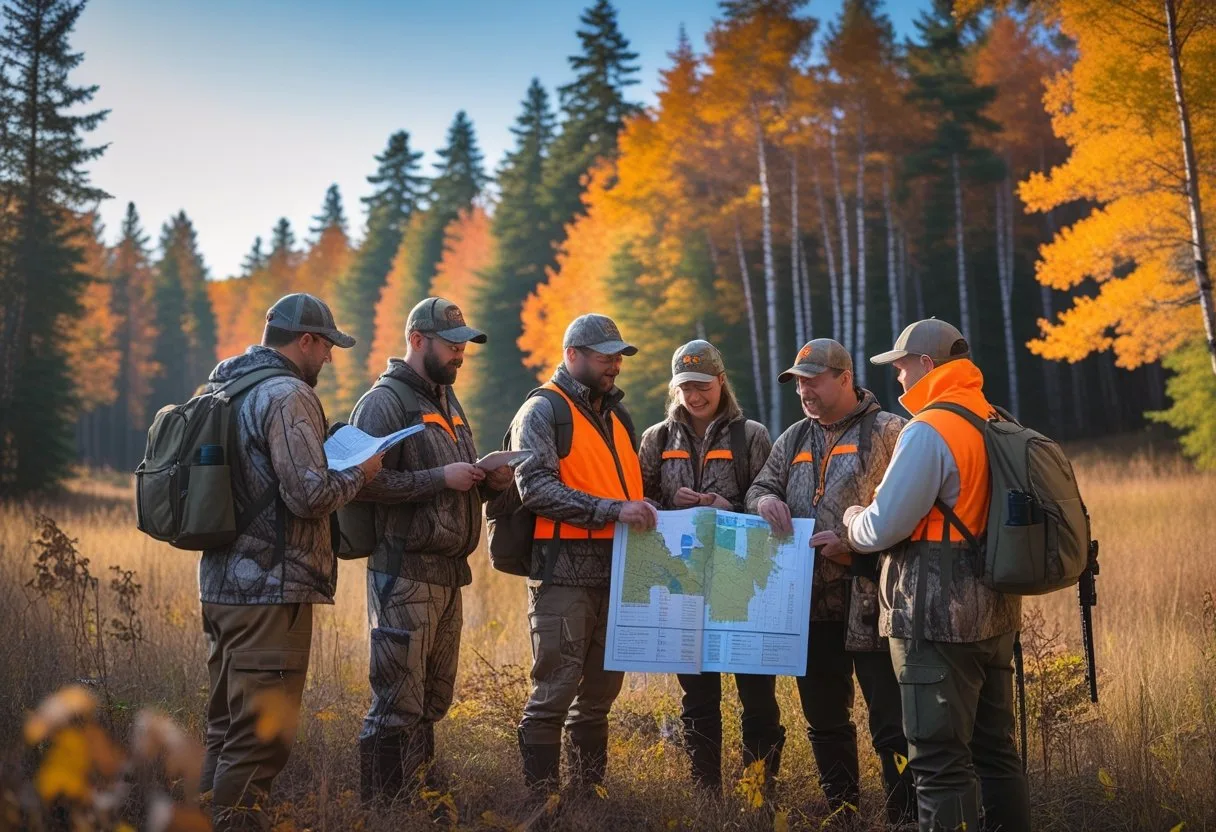Planning your next hunt in Ontario starts with knowing the 2025 Ontario Hunting Regulations set guidelines for seasons, licensing, and safety requirements to help you stay compliant while enjoying the outdoors.
Whether you hunt deer, moose, or migratory birds, understanding these updates ensures you make the most of every trip.

You can find the full details in the official 2025 Ontario Hunting Regulations Summary.
This summary outlines changes to open seasons, tag allocations, and reporting requirements.
The updates reflect the Ministry of Natural Resources and Forestry’s efforts to maintain healthy wildlife populations and safe hunting practices.
This guide will walk you through key regulation changes and big game and bird hunting information.
It also answers common questions for hunters in Ontario.
Key 2025 Ontario Hunting Regulations
You must follow specific rules to hunt legally in Ontario.
These include holding valid licences, reporting your harvest, and following season dates and limits set by the Ministry of Natural Resources and Forestry (MNRF).
Each regulation helps protect wildlife and maintain sustainable hunting practices.
Requirements – 2025 Ontario hunting regulations

You need a valid Outdoors Card and the correct hunting licences before hunting in Ontario.
The Outdoors Card acts as your identification for all hunting and fishing activities.
You can buy or renew it through ServiceOntario or at participating licence issuers.
Each game type—such as deer, moose, or small game—requires a specific licence tag.
Some species also require draws or validation tags.
Licences and tags are not transferable and must be carried while hunting.
Fees vary by species and residency status.
The 2025 Ontario Hunting Regulations Summary provides a full list of current licence fees and requirements.
If you are a new hunter, you must complete the Ontario Hunter Education Program before applying for your first licence.
This ensures you understand firearm safety, ethics, and wildlife laws under the Fish and Wildlife Conservation Act.
Learn more about hunter education requirements from the Hunter Education Course in Ontario and the Ontario government’s official licensing page.
Hunter Reporting and Compliance
You must complete mandatory hunter reporting for certain species after each hunting season.
Reporting helps the MNRF track harvest numbers and monitor wildlife populations.
Reports are usually submitted online through Hunt and Fish Ontario.
Missing a report can lead to fines or suspension of future hunting privileges.
Each report asks for details such as the date, location, and sex of your harvested animal.
Even if you did not hunt or harvest, you must still file a “no activity” report.
Hunters are also required to follow all compliance checks.
Conservation officers may request to see your licences, tags, or harvested game at any time to ensure adherence to the Fish and Wildlife Conservation Act.
For more about wildlife compliance and enforcement, visit the Ontario Ministry of Natural Resources and Forestry site.
General Hunting Rules and Possession Limits
Ontario’s hunting rules are designed to ensure safety and conservation.
You must not shoot from, along, or across a public road, and you cannot carry a loaded firearm in a vehicle.
Night hunting is prohibited.
Ontario requires hunter orange during firearm seasons so other hunters can see you clearly — a rule that has reduced accidents significantly whenhunting during open firearm seasons for big game.
This includes a vest or jacket and a hat.
Possession limits vary by species.
For example, small game and migratory bird limits are listed in the 2025 Ontario Hunting Regulations Summary and the Government of Canada’s migratory bird regulations.
Always label and store your harvested game properly.
Transporting untagged or unregistered animals is illegal.
Management Units and Season Dates – Updated October 2025
Ontario is divided into Wildlife Management Units (WMUs).
“If you’re in WMU 21B, the new deer tag rules mean fewer controlled hunt spots. This is how to improve your odds in the draw.”
Each WMU has different open seasons, tag quotas, and rules for species such as moose, deer, and bear.
Before hunting, check which WMU you are in and confirm the specific season dates for your target species.
The 2025 Ontario Hunting Regulations Summary lists all WMUs and maps to help you plan your hunt.
Some WMUs offer controlled hunts that require entry through a draw system.
Results and entry details are available through Hunt and Fish Ontario.
Season dates may vary by weapon type—archery, muzzleloader, or rifle—so review each table carefully before heading into the field.
Big Game and Migratory Bird Hunting in Ontario 2025
To hunt legally in Ontario in 2025, every hunter needs two things: an active Outdoors Card and the correct license for the species they’re pursuing. Think of the Outdoors Card as your permanent ID — it’s valid for three years and links all your hunting activity together. Licenses, on the other hand, are seasonal and species‑specific. For example, if you’re planning a deer hunt in WMU 60, you’ll need a deer license for that year plus any additional tags if you’re entering a controlled hunt.
The Ministry uses this system to track harvest data and manage wildlife populations. Skipping either step can lead to fines or loss of hunting privileges, so it’s worth double‑checking your paperwork before heading out.
Updated October 2025
To hunt moose, you must hold a valid moose licence and a moose tag.
Ontario uses a points-based moose tag allocation process that includes a primary allocation stage and a second chance allocation stage.
Tags are divided into bull, cow/calf, and calf categories.
In the primary allocation, you apply for your preferred Wildlife Management Unit (WMU) and tag type.
The system uses your accumulated points to determine priority.
If you don’t receive a tag in the first round, you can enter the second chance allocation for remaining tags.
You may transfer a tag to another hunter under specific conditions, such as family transfers.
Tag quotas vary by WMU and are based on population surveys.
Review the 2025 Ontario Hunting Regulations Summary for updated season dates and quota details.
For more on moose management, see the Ontario Moose Management Program.
Deer Hunting and Controlled Hunt Seasons
Deer hunting in Ontario includes both open seasons and controlled deer hunt seasons.
You need a deer licence and, in some cases, additional deer tags for specific WMUs.
Controlled hunts use a draw system that limits participation to manage local populations and land access.
Controlled hunts may allow firearms, bows, or muzzle-loading guns depending on the area.
You must apply early for these hunts, and successful applicants receive a tag valid only for the assigned location and season.
Some areas permit Sunday gun hunting, while others do not.
Check your municipality’s rules before hunting.
The Ontario Hunting Regulations Summary lists all WMUs with their open and controlled hunt dates.
For more information on deer management, visit the Ontario Deer Management Program.
Migratory Game Bird Permits and Federal Rules
You need a Migratory Game Bird Hunting Permit with a Canadian Wildlife Habitat Conservation Stamp to hunt migratory birds.
These are federal documents issued under the Migratory Birds Convention Act.
You can buy and print the electronic permit online from the Migratory Game Bird Hunting Permit page.
The federal hunting regulations for migratory birds cover open seasons, bag limits, and species restrictions.
For example, Harlequin Duck and King Rail have no open season under the Species at Risk Act.
Only non-toxic shot is allowed for most migratory bird hunting.
Lead shot is banned except for woodcock.
Game officers enforce these laws and may issue fines or penalties for violations.
For more details, consult the Environment and Climate Change Canada site.
Firearms, Bows, and Equipment Requirements – 2025 Ontario hunting regulations
You must meet firearms accreditation and safety requirements under the Canadian Firearms Act.
Legal firearms for hunting include rifles, shotguns, and muzzle-loading guns, depending on the species and WMU.
Bowhunters may use compound, recurve, or longbows with appropriate bow tags.
Crossbows are allowed in most areas but may be restricted during archery-only seasons.
Always verify the minimum draw weight and arrow length required for the species you hunt.
Keep firearms unloaded and safely stored during transport.
Discharging a firearm near homes or businesses is restricted.
You can report illegal firearm use or hunting activity to Crime Stoppers at 1‑800‑222‑TIPS.
For comprehensive firearms information, visit the Royal Canadian Mounted Police Canadian Firearms Program.
Frequently Asked Questions – 2025 Ontario hunting regulations

What are the new hunting season dates for various game in Ontario for 2025?
The 2025 hunting seasons vary by Wildlife Management Unit (WMU) and species.
You can check the official 2025 Ontario Hunting Regulations Summary for specific open and close dates.
Most small game and waterfowl seasons align with previous years, but some deer and moose seasons have adjusted start or end dates.
How have bag limits changed for deer hunting in Ontario this year?
Bag limits for deer depend on the WMU and the type of hunt.
The 2025 regulations maintain most previous limits but include adjustments in select zones to balance herd populations.
Controlled deer hunts continue to prohibit the use of dogs, as noted in recent updates to the 2025 Ontario hunting regulations.
What are the updated requirements for hunter education and licensing in Ontario?
You must complete the Ontario Hunter Education Course before purchasing your first hunting license.
The course can be taken online or in person, and you must pass the final test to qualify.
Details about the process and fees are listed in the Hunter Education Course in Ontario FAQ.
Are there any modifications to the use of hunting equipment and firearms in the 2025 Ontario hunting regulations season?
Firearms and ammunition rules remain mostly unchanged.
The use of lead shot is still banned in areas where it was previously restricted, including National Wildlife Areas.
The migratory bird hunting regulations for Ontario confirm that only non-toxic shot is allowed for all hunting in these zones.
For more information on lead shot bans across Canada, visit the Government of Canada’s lead shot ban resource.
What species have been added to or removed from the list of huntable wildlife in Ontario?
The 2025 summary does not add or remove major species from the huntable list.
Some Wildlife Management Units (WMUs) have modified quotas or restrictions for certain game birds and small mammals.
You can review these updates in the official Ontario Hunting Regulations Summary.
For additional legal information on Ontario wildlife, see the Fish and Wildlife Conservation Act from the Government of Ontario.
How has the process for reporting harvests been altered in the 2025 Ontario hunting regulations?
Hunters must continue to report their harvests through the online reporting system.
The province has simplified the digital process to make it faster and more accurate.
You can find reporting instructions and deadlines in the 2025 Ontario Hunting Regulations Summary.
For additional guidance on online reporting, visit the official Ontario Government Hunting page or refer to the Government of Canada’s Harvest Reporting Guide.






















